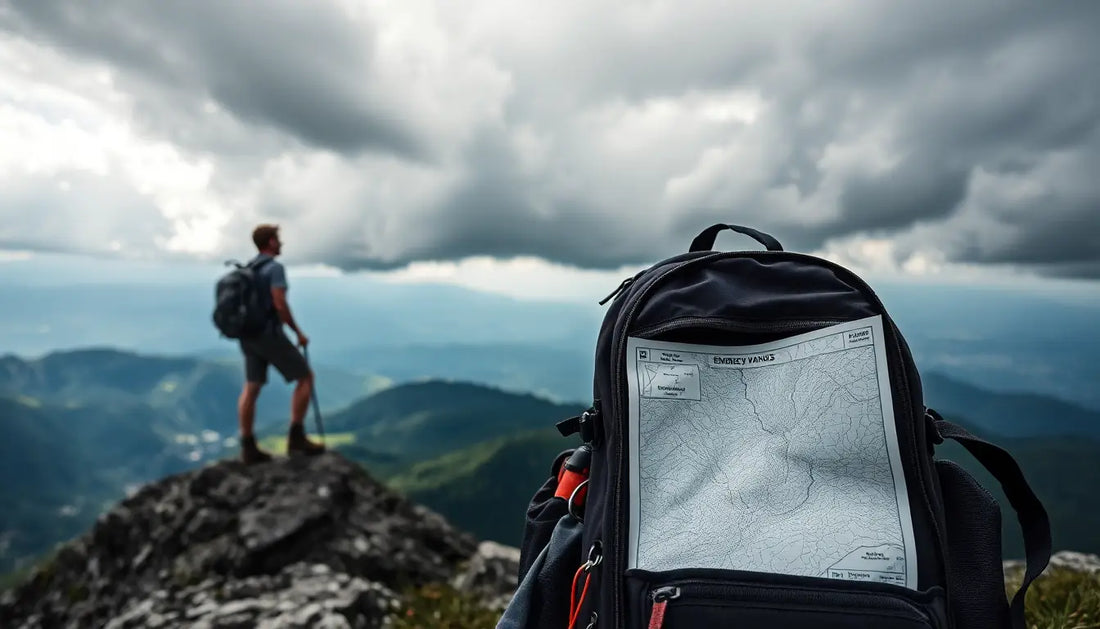
When Disaster Strikes: Planning and Responding to Natural Disasters While in the Outdoors
TF AdventureNatural disasters can strike at any moment, even when we're enjoying the great outdoors. As outdoor enthusiasts, it's crucial to be prepared for the unexpected and know how to respond effectively in the face of emergencies. In this comprehensive blog post, we'll explore the steps you can take to plan for and respond to various natural disasters while exploring the wilderness.
Understanding Natural Disaster Risks
Before embarking on any outdoor adventure, it's essential to familiarize yourself with the potential natural disaster risks in the area. Research the region's history, geography, and weather patterns to identify the most common threats, such as earthquakes, tsunamis, volcanic eruptions, landslides, avalanches, hurricanes, or flash floods.
By understanding the specific risks, you can tailor your preparedness and response strategies accordingly. For example, if you're hiking in an earthquake-prone region, you'll need to know how to secure your shelter and respond to tremors. Conversely, if you're camping near a coastline, you'll need to be aware of tsunami warning signs and have an evacuation plan in place.
Building a Comprehensive Disaster Preparedness Kit
A well-stocked disaster preparedness kit is a crucial component of your outdoor adventure planning. This kit should include a variety of essential items that can help you survive and respond to various natural disasters. Some key items to include are:
- Emergency communication devices (e.g., satellite phone, emergency beacon, two-way radios)
- First aid supplies (e.g., bandages, antiseptic, medications)
- Survival tools (e.g., multi-tool, knife, fire starter, water purification system)
- Shelter and warmth (e.g., tent, sleeping bag, thermal blankets)
- Food and water (e.g., non-perishable food, water purification tablets, water containers)
- Backup power sources (e.g., portable chargers, solar panels, hand-crank generators)
- Personal protective equipment (e.g., hard hats, goggles, gloves)
Regularly check and maintain your disaster preparedness kit to ensure that all items are in working order and replenish any used or expired supplies.
Developing Emergency Response Protocols
In addition to having the right equipment, it's crucial to have a well-defined emergency response plan in place. This plan should outline the specific steps you and your group will take in the event of a natural disaster, including:
Communication and Coordination
- Establish a clear chain of command and communication protocols within your group.
- Identify designated meeting points and rally locations in case you become separated.
- Familiarize yourself with emergency communication channels and procedures, such as contacting local authorities or emergency services.
Evacuation and Shelter
- Determine the safest evacuation routes and have multiple options planned.
- Know how to quickly and safely dismantle your campsite or outdoor setup.
- Identify potential shelter options, such as sturdy structures or natural formations, that can provide protection.
First Aid and Medical Response
- Ensure that at least one member of your group is trained in first aid and CPR.
- Familiarize yourself with the location of the nearest medical facilities or emergency services.
- Develop a plan for administering first aid and transporting injured individuals to safety.
Community Coordination
- Establish communication and coordination protocols with local emergency management agencies or outdoor recreation organizations.
- Understand the community's disaster response plans and how you can integrate your group's efforts.
- Identify ways to contribute to the overall disaster response, such as providing supplies, skills, or volunteer assistance.
Regular practice and drills can help ensure that your emergency response protocols are effective and that your group is well-prepared to respond to various natural disaster scenarios.
Adapting to Changing Conditions
Natural disasters can be unpredictable and rapidly evolving, so it's crucial to remain adaptable and responsive to changing conditions. Continuously monitor weather forecasts, emergency alerts, and local news to stay informed about the latest developments.
Be prepared to adjust your plans and actions as the situation unfolds. This may involve altering your route, seeking alternative shelter, or modifying your emergency response procedures. Remain calm, communicate effectively with your group, and be willing to make quick decisions to ensure the safety of everyone involved.
Collaborating with Local Authorities and Resources
When faced with a natural disaster while in the outdoors, it's essential to collaborate with local authorities and resources to maximize your chances of survival and recovery. Familiarize yourself with the emergency management protocols and communication channels in the areas you plan to visit.
Establish connections with local search and rescue teams, park rangers, or outdoor recreation organizations. These entities can provide valuable information, resources, and assistance in the event of a natural disaster. Additionally, be prepared to share information about your group's location, activities, and emergency response plans to facilitate coordinated efforts.
Conclusion
Navigating the outdoors during a natural disaster can be a daunting and potentially life-threatening experience. However, by being proactive, well-prepared, and adaptable, you can significantly increase your chances of survival and minimize the impact of these events. Remember, the key to weathering natural disasters in the wilderness is to plan ahead, stay informed, and work together with local resources and authorities.
At TF Adventure, we are committed to helping outdoor enthusiasts like you stay safe and prepared for any eventuality. Our comprehensive range of emergency preparedness and survival gear, as well as our educational resources, can equip you with the knowledge and tools you need to respond effectively to natural disasters while exploring the great outdoors. Visit our website or speak to one of our experts to learn more about how we can support your adventurous spirit while keeping you safe.
